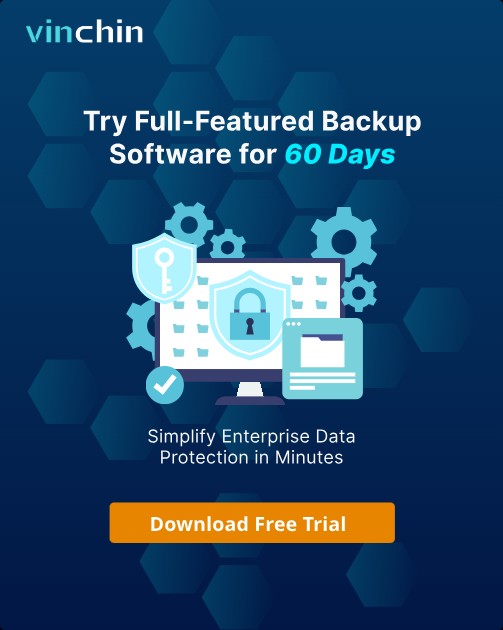-
What is Enterprise Data Management?
-
Key Components of Enterprise Data Management
-
Benefits of Using Enterprise Data Management
-
Oracle Enterprise Data Management
-
Oracle EDM vs. EPM
-
Professional Oracle Disaster Recover Solution
-
Oracle Enterprise Data Management FAQs
-
Conclusion
In recent years, due to the growing prevalence of digitalization and the rapid development of IT departments, organizations have experienced rapid growth. As organizations expand, the number of systems also increases, making the management of master data necessary.
While enterprises continue to evolve technologically, the rise in cybercrime and the opportunities for imprecise data management due to human error can lead to a decline in data quality. Poor data management strategies reduce data consistency, quality, and accuracy, and hinder overall organizational growth. Proper data management can increase productivity, improve workflows, and minimize security risks and the possibility of data loss. As a result, global enterprise data management solutions are rapidly increasing.
What is Enterprise Data Management?
Enterprise Data Management (EDM) is an important big data process used to standardize, disseminate, and manage data, adopted by various organizations for timely and accurate data management. EDM involves managing various assets of an organization, such as inventory numbers, graphics, financial information, social media, and Internet of Things (IoT) data. EDM ensures that companies can easily locate, access, store, and protect their data.
Key Components of Enterprise Data Management
Master Data Management (MDM): MDM is the most critical component, used across multiple applications, and ensures that the organization determines authentic and up-to-date data.
Data Integration: Data integration is a process where data streams from different sources are gathered in one place, enabling any member to access the data easily at any given time.
Data Governance: Data governance includes guidelines and policies established by the organization to maintain high-quality, complete, and secure data. It creates a structure that streamlines the flow of information.
Data Security: Data security includes key strategies organizations use to store and protect data from leaks and theft.
Data Quality: Data quality is another crucial component to ensure the acquisition of high-quality and accurate data.
Data Warehouse: A data warehouse helps store current and historical data and serves as a platform for analysis, data mining, and business intelligence.
ETL/ELT: ETL (Extract, Transform, Load) is an essential part of the EDM system that facilitates easier data movement. It extracts data that is not optimized for analysis and transforms it into a centrally hosted format optimized for analytics.
Benefits of Using Enterprise Data Management
Enterprise Data Management is essential because it provides a streamlined, well-organized system to locate, access, manage, store, and protect organizational data.
Here are several advantages of deploying EDM solutions:
Accurate data management helps organizations detect isolated or hidden data and assess risk levels.
EDM assists in strengthening data management, improving quality, and enhancing operational decision-making.
EDM also helps manage data, analyze and simplify workflows, and improve process efficiency by eliminating unnecessary work-related tasks.
Oracle Enterprise Data Management
Oracle is a U.S.-based multinational computer technology company headquartered in Austin, Texas. It develops and offers cloud-based systems and database software and technologies. Oracle provides cloud-based enterprise data management solutions for precise big data management. Oracle Enterprise Data Management Cloud offers accurate alignment of enterprise hierarchies in one place and assigns them to reporting, financial, and operational systems.
The core advantages of the Oracle database are first reflected in its excellent performance. It can efficiently handle massive amounts of data, whether structured or unstructured, and quickly store, manage, and retrieve it. With advanced storage architecture and optimization algorithms, Oracle maintains stable performance even in high-concurrency access and complex query scenarios.
Its strong reliability and security provide solid protection for enterprise data. Through data backup and recovery, redundant storage, access control, and encryption technologies, Oracle builds a multi-layered security defense system to ensure rapid data recovery in case of hardware failure, natural disasters, or human error, while preventing unauthorized access and leaks.
High scalability and flexibility enable Oracle to adapt to the development needs of enterprise businesses. Whether it’s hardware expansion (such as adding server nodes or storage) or software upgrades, Oracle supports seamless expansion without interrupting operations. In addition, its rich development tools and interface support integration with mainstream programming languages and platforms, allowing enterprises to customize system functions—for example, flexibly adapting new business modules during ERP system upgrades to meet dynamic management needs.
In response to the trends of big data and cloud computing, Oracle has launched targeted solutions. Its big data cloud services integrate data collection, storage, analysis, and mining capabilities, helping enterprises extract value from massive data—such as internet companies analyzing user behavior to optimize services. Its database cloud services reduce IT costs through cloud deployment, allowing startups to quickly build business systems without setting up their own data centers, thereby focusing on innovation and growth.
Oracle EDM vs. EPM
Oracle EDM and Enterprise Performance Management (EPM) serve very different purposes, even though they are both part of the Oracle Cloud ecosystem.
EDM is all about maintaining consistency and control over enterprise master data—things like charts of accounts, cost centers, organizational hierarchies, and other reference data that span across systems like ERP, EPM, and HCM. It's primarily used to ensure that the data structure used across these systems is aligned, governed, and auditable. If your organization frequently changes business structures, merges divisions, or needs to synchronize metadata across different applications, EDM provides the workflows and governance to make that process clean and centralized.
EPM, on the other hand, is focused on financial and operational performance. It supports budgeting, forecasting, planning, financial consolidation, and performance reporting. The goal is to help finance and business teams understand where the business is heading, simulate different financial scenarios, and close the books efficiently. It's the strategic layer used by CFOs, analysts, and planners to make informed decisions based on trusted data.
The two are complementary: EDM ensures that EPM is working with clean, consistent metadata. If the hierarchies in your EPM planning cube don't match the actual reporting structures in ERP, you’ll get bad insights. That’s where EDM comes in—standardizing those structures and managing change in a controlled way so that your EPM system can deliver accurate analysis and reporting.
Professional Oracle Disaster Recover Solution
Vinchin Backup & Recovery provides an efficient backup and disaster recovery solution for Oracle databases, ensuring business continuity and data security. It supports full, incremental, and differential backups of Oracle databases, making the backup process simple and efficient. With built-in deduplication and compression technology, Vinchin optimizes storage space utilization, reduces the size of backup files and data transfer time.
In terms of disaster recovery, Vinchin supports cross-platform recovery and off-site recovery, Combined with its flexible recovery strategy, users can quickly recover Oracle databases when disasters occur, reducing downtime and data loss risks. In addition, the visual management interface provided by Vinchin makes backup and recovery operations intuitive and easy to use, making it easier for IT administrators to monitor and manage multi-site disaster recovery tasks.
It also supports VMware, Hyper-V, XenServer, XCP-ng, oVirt, RHV, OpenStack, Proxmox, etc. and NAS, file server, Linux & Windows Server. More features waiting for you to discover
It only takes 4 steps to backup Oracle database with Vinchin Backup & Recovery:
1. Select the backup object.
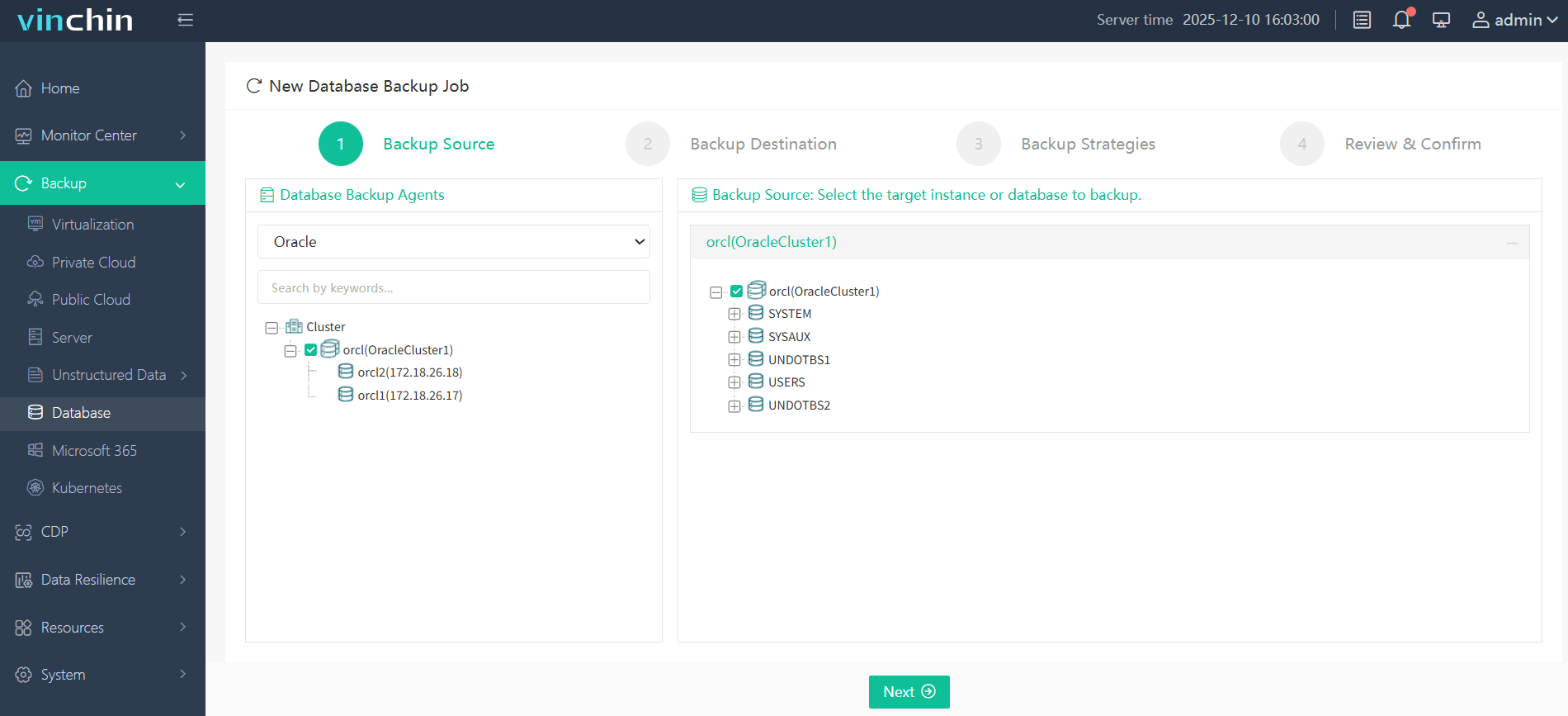
2. Select backup destination.
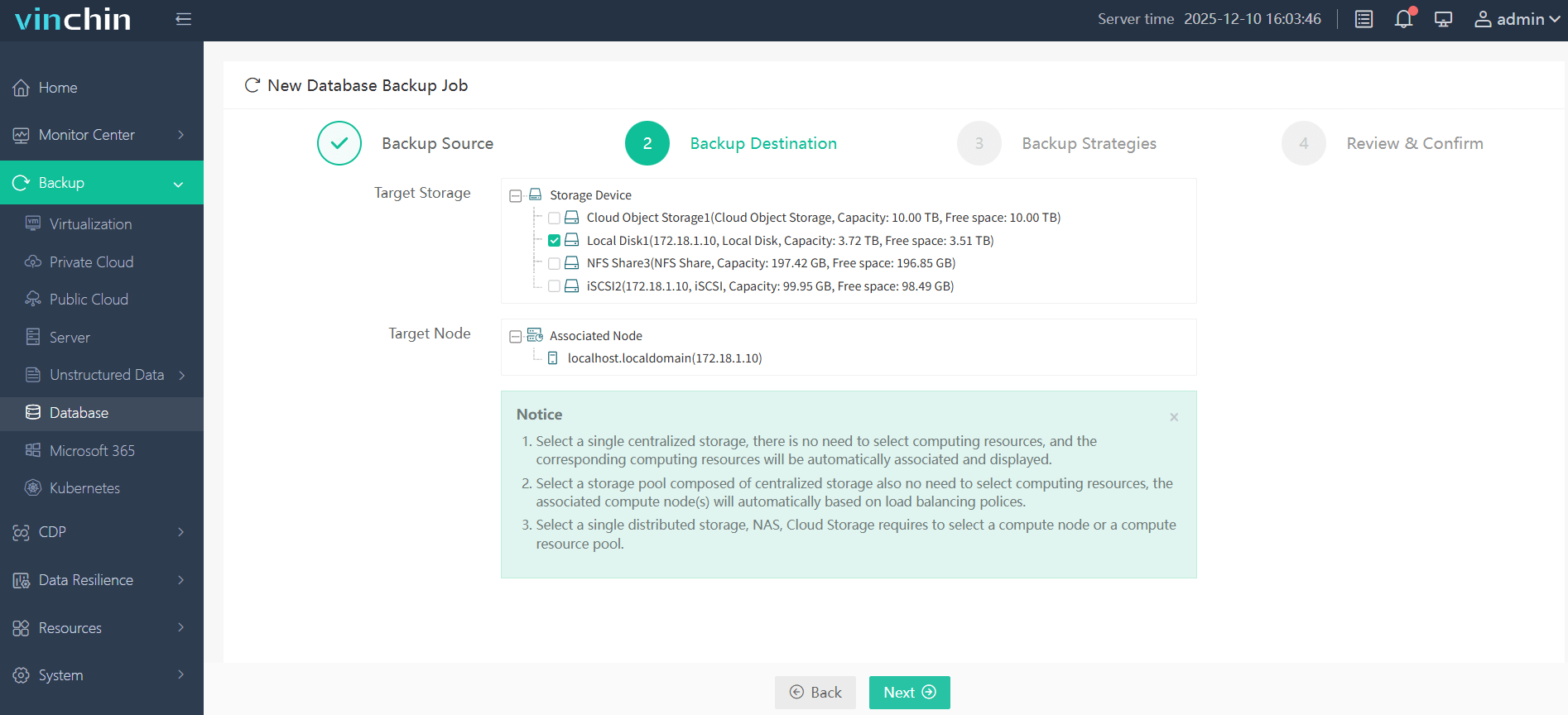
3. Configure backup strategies.
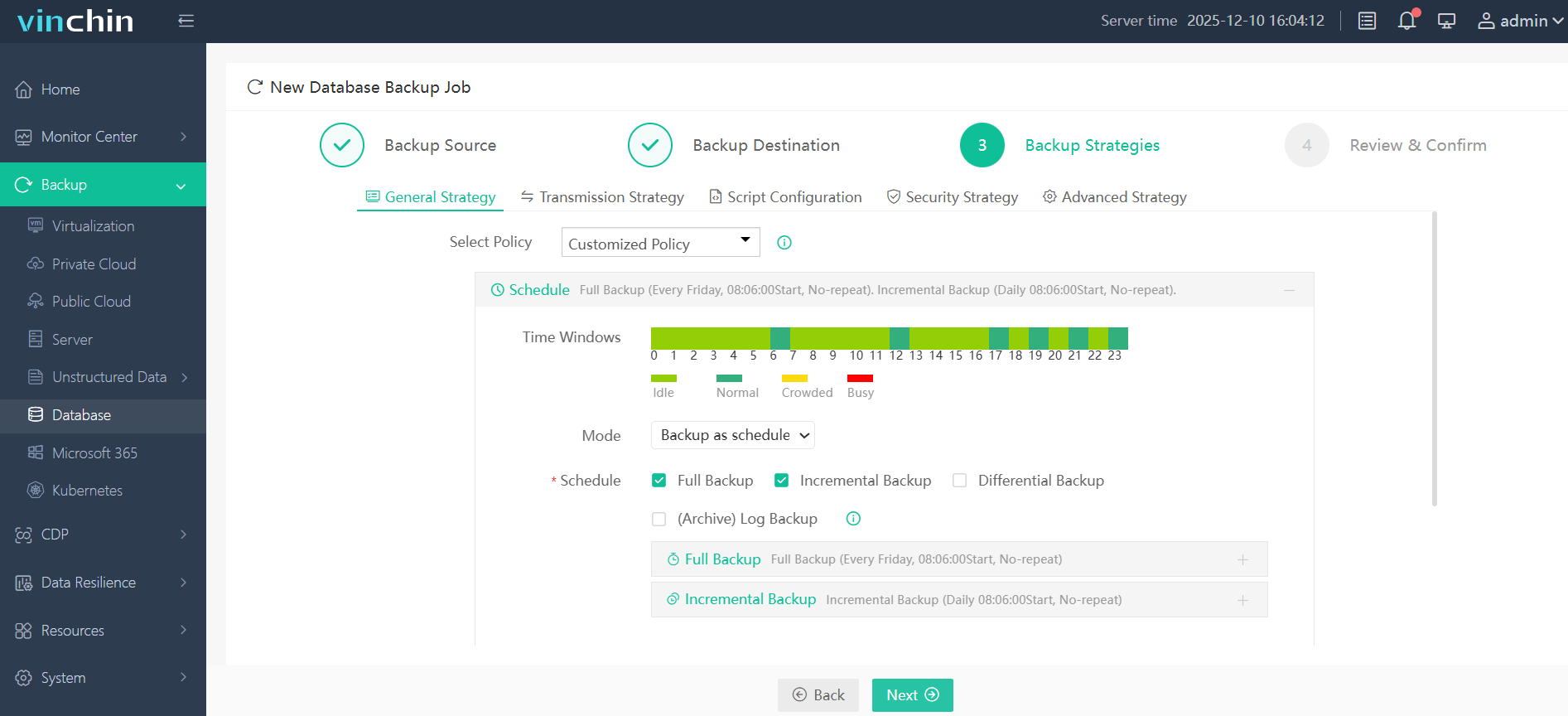
4. Review and submit the job.
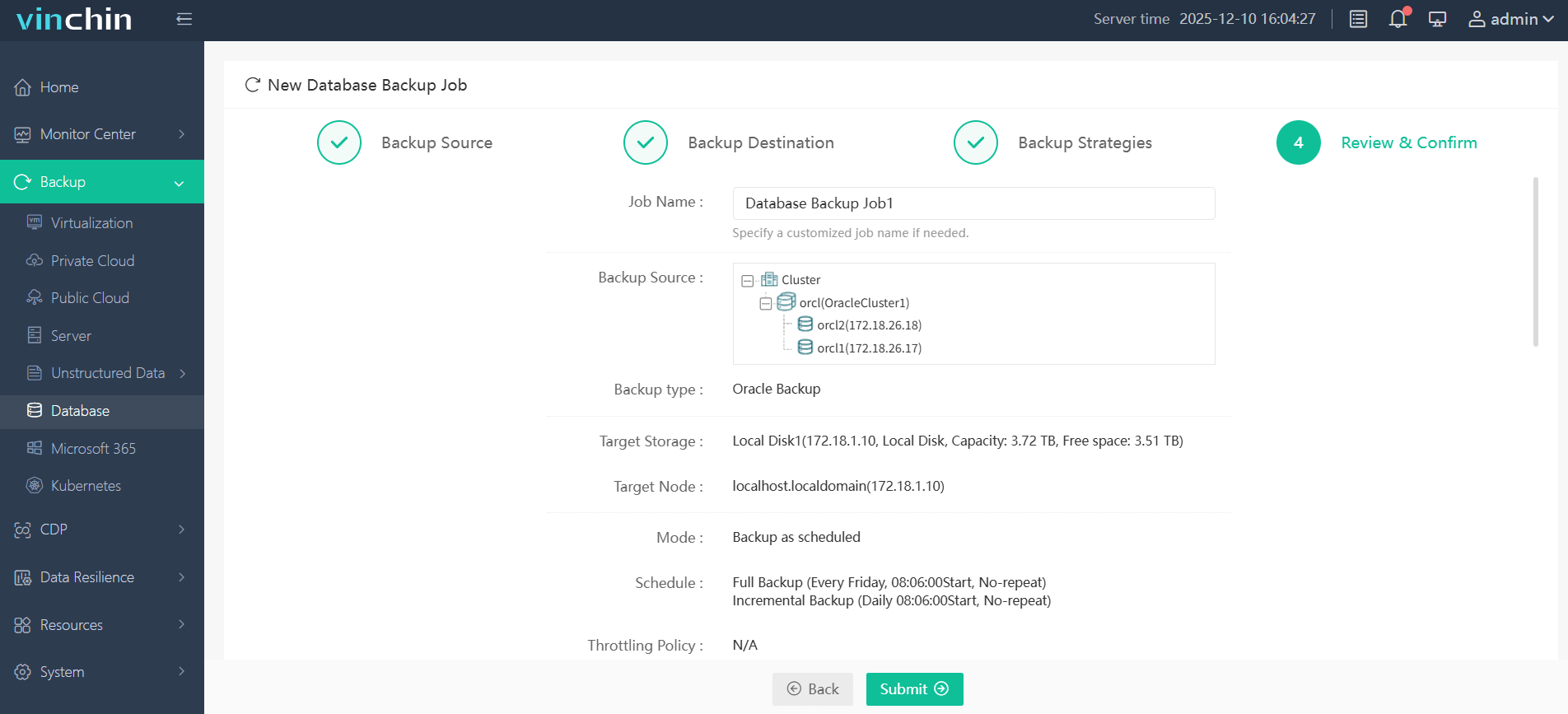
Come on and experience the full capabilities of this robust system with a complimentary 60-day trial! Contact us with your requirements, and you will receive a tailored solution for your IT landscape.
Oracle Enterprise Data Management FAQs
1. How is EDM different from Oracle Data Relationship Management (DRM)?
EDM is a cloud-native solution and focuses more on business-driven workflows, application integration, and data governance. DRM is more technical and on-premises, suited for custom metadata management.
2. What are viewpoints in Oracle EDM?
Viewpoints represent how data (such as hierarchies or lists) appears within a specific application context. Multiple viewpoints can be created for different consuming systems.
Conclusion
As a leader in the enterprise database field, Oracle continues to empower digital transformation across industries with core advantages in performance, security, scalability, and technological foresight. In the future, as data volumes grow and technology evolves, Oracle will continue to lead the development of database technologies, helping enterprises achieve data-driven innovation and breakthroughs in the digital wave.
Share on:





